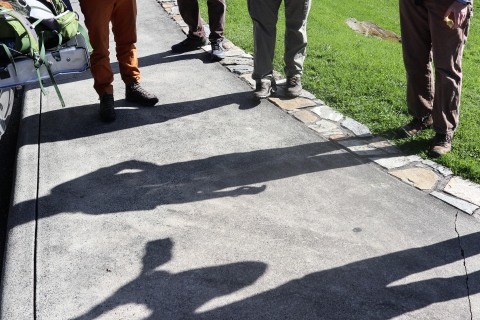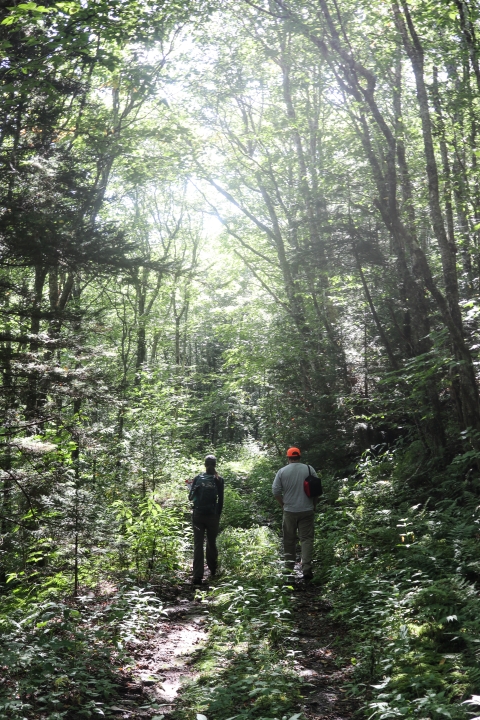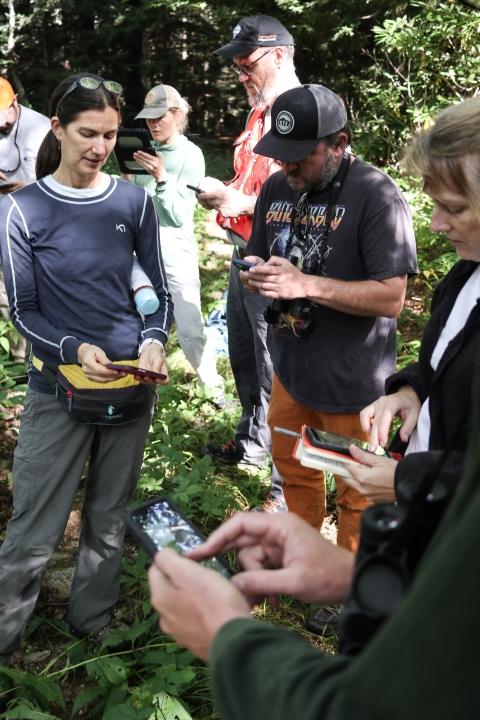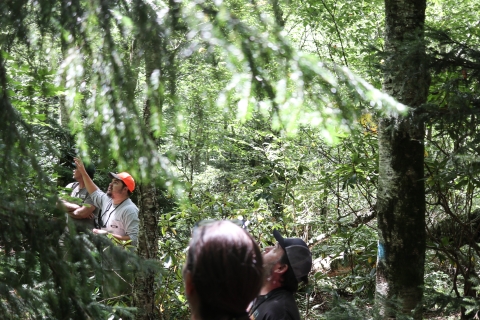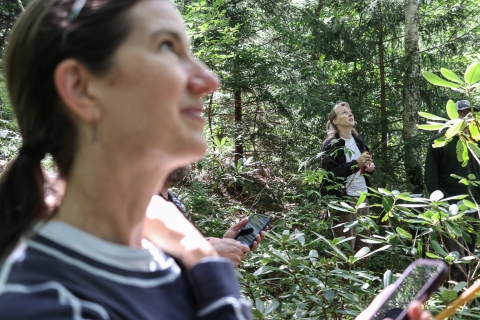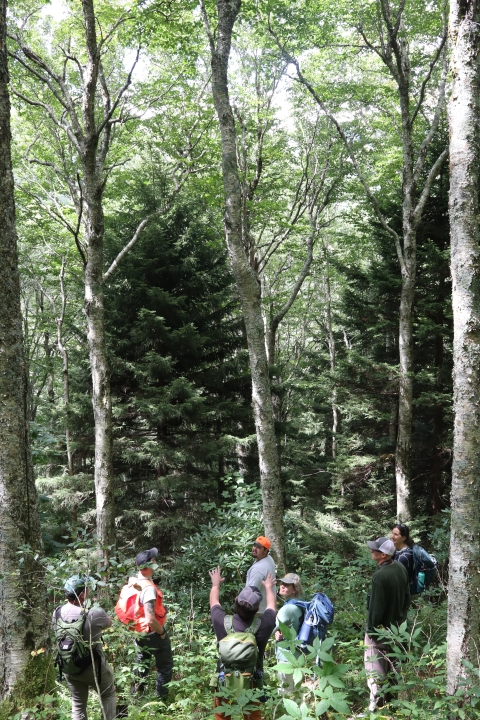There’s a fungus that grows amidst the roots of high-elevation conifer trees – largely red spruce and Fraser fir - in the southern Appalachians. This fungus is a primary food for endangered Carolina northern flying squirrels. The problem is, these conifer trees have taken a beating – from unsustainable, industrial logging and subsequent wildfire a hundred years ago, to acid precipitation, to the arrival of the balsam woolly adelgid, an invasive insect that kills Fraser fir trees. Fewer conifer trees, less fungus. Less fungus, fewer Carolina northern flying squirrels.
The Southern Appalachian Spruce Restoration Initiative, which includes the Service, is working to restore red spruce to these areas – via planting nursery-raised trees, and knocking-back competition to existing spruce so they may grow into cone-bearing trees. However, controlling that competition requires a gentle touch – while red spruce supports the food the squirrels need, the yellow birch that can compete with spruce for nutrients, water, and sunlight, often provides shelter to the squirrels.
A team of wildlife biologists and foresters from the Service, Appalachian Trail Conservancy, Forest Stewards Guild, N.C. State Parks, N.C. Wildlife Resources Commission, and U.S. Forest Service recently visited a site in North Carolina’s Black Mountains to develop an understanding of how best to release existing red spruce from competition, while ensuring there are still plenty of large yellow birch that are valuable to the squirrel.


